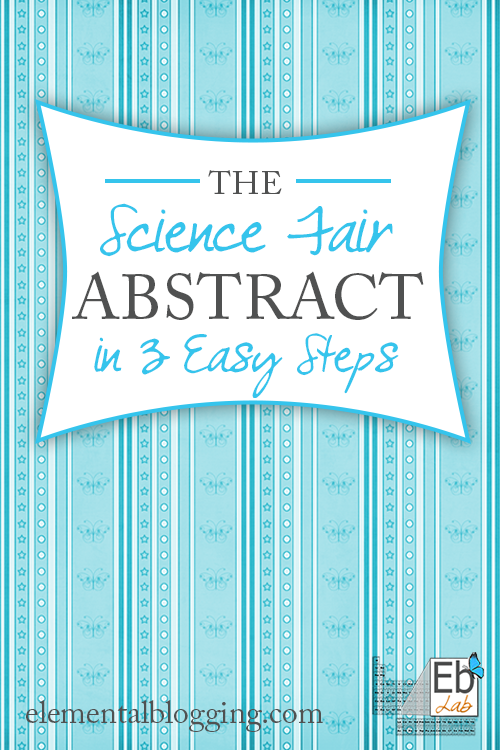 science fair project in 3 easy steps
science fair project in 3 easy steps  science fair project in 3 easy steps
science fair project in 3 easy steps
" width="350" height="525" />You have worked for over a month researching, developing, and performing your science fair project. Your board is all ready to go. Your talk is prepared. But as you look at the science fair requirements you read the following:
Your entry information should include your name and age along with the title of your project and an abstract limited to a maximum of 250 words.
250 words! How in the world are you going to fit a months’ worth of work into 250 words? Relax – I’m here today to share how to write a science fair abstract in three easy steps. Once you finish, you’ll have a well-crafted, 250-words-or-less summary of your science fair project.
At this point, your answers need to include all the pertinent information, but still be as brief as possible.
Here is a handy printable for you to use as you answer these five questions.
Now that you have answered the above questions, you need to write the first draft of your abstract.
Basically, you need to take your answers and add a few transitions to make it all flow into one paragraph.
As you write the draft, don’t worry about the word count. You will whittle things down in the next step.
Now that you have a draft to work with, it is simply a matter of crossing out any unnecessary words until you have between 100 and 250 words in the abstract.
Here are a few tips of things to avoid in the final draft of your abstract:
The final abstract should be an easy-to-read, short summary of the science fair project you did.
Here is an abstract from our daughter’s project to give you an idea of what it can look like:
I was fascinated by an experiment we recently did on using an acid to plate copper on a nail. I wanted to explore the topic further, which why I chose to study how the pH of an acid affects copper plating. After some research, I guessed that the lower the pH the more copper would be deposited on the nail. For my experiment, I made several different solutions of acid with pH’s ranging from 1 to 7. Then, I placed the pennies in each jar overnight. After that, I took out the penny and replaced it with the nail in each jar and observed what happened over three days. The nail in the solution with a pH of 1 was completely dissolved. The nail in the solution with a pH of 2 was partially dissolved. The nail in the solution with a pH of 3 had a fair amount of copper plated on it. The nail in the solution with a pH of 5 had a bit of copper. The nail in the solution with a pH of 7 was unaffected. I learned that the pH of the acid solution is important to copper plating, but unlike my hypothesis, it needs to be around pH of 3 to be the most effective.
Develop your words.
Write your draft.
Whittle it down.
Follow these three easy steps and you’ll have an easy-to-read summary of your science fair project.
Come listen to the science fair project challenge!


Welcome to the Elemental Blogging Laboratory, a.k.a. the Eb Lab. Here at the lab, I have the pleasure of sharing with you all my passion for mixing up solutions for homeschool science! My name is Paige Hudson. I am a homeschooling mom and science curriculum writer for Elemental Science.
Why do I call this blog the "Eb Lab"? It is because I am scientist at heart and by profession, so it pretty much spills into everything I do. I love to share tips and tools with fellow educators as they seek to share science with their students!
That is what this blog is all about. One homeschooler to another, sharing her area of expertise, seeking to support you as you teach your students about the wonders of science.
So, grab your lab coat, notebook, and goggles. well maybe not the goggles because let's face it nobody looks good in those. and you probably don't have a lab coat lying around your house either.
So, grab a cup of coffee and notebook, and head on in to the Eb Lab to gather tools for homeschool science, tips for homeschooling, and the latest Elemental Science news!